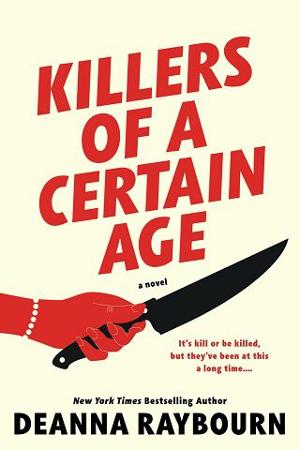Chapter Twenty-Seven
CHAPTER TWENTY-SEVEN
We spent the rest of the night passing around various printouts. We found detailed maps of the area, downloaded a brief history of the house in an out-of-print book on Parisian architecture, and took a Google Earth stroll down the Rue d’Archambeau, a tiny cul-de-sac tucked off the Avenue du Maine. It was Mary Alice who noticed the problem first.
“The entrance to the cul-de-sac is adjacent to the train station,” she said.
Helen raised her brows. “So?”
“So that’s a TGV station, high-speed, state-of-the-art. It’s going to be crawling with CCTV cameras.”
Helen was skeptical. “You really think Carapaz has had somebody hack into public security cameras for him?”
“He doesn’t have to,” Mary Alice said. She was reviewing the Google Earth tour and stopped, pointing to a tiny black spot above his front door. “He’s got cameras of his own.” She whizzed us around his house, looking from every angle, then popped across the street to look at the neighbor’s house. “Seventeen cameras. At least seventeen I can see. Now, some may be dummies and put there just for show, but at least a handful of them are going to be live and monitored, especially now that Günther is dead.”
Natalie had been quiet, surveying an old map of Paris she had unearthed from Constance Halliday’s study. “What are you doing with that?” I asked. “It’s not up-to-date. It doesn’t have any Starbucks on it.”
She grinned. “Nope, but it has exactly what I needed. I know how to get in.”
Mary Alice gave her a look. “Sprout wings and fly?”
“No, smartass,” Natalie said smugly. “Exactly the opposite. We’re going underground.”
The reactions were not positive.
“What do you mean we’re going underground?” Helen asked.
Natalie pushed her map over and traced a route with her finger. “The house is here, on Rue d’Archambeau just off of Avenue du Maine. The Avenue du Maine intersects with the Rue Froidevaux. And look where the Rue Froidevaux ends up.”
She tapped the map triumphantly. Mary Alice twisted her neck, reading upside down. “Les Catacombes de Paris. Oh, hell no.”
She folded her arms over her chest, but Natalie was undeterred. “It’s a brilliant idea.”
“It’s a grotesque idea. Have you ever been in that place?” Mary Alice demanded. “It’s just miles of tunnels full of bones. Bones, stacked upon bones, piled on top of—guess what? More bones.”
“The operative phrase being ‘miles of tunnels,’ ” Natalie replied. “Besides, how can you be squeamish about bones?”
“I just don’t like them,” Mary Alice said stubbornly. “The skulls freak me out. They seem like they’re looking at you but they don’t have eyes. It’s not natural.”
“It’s completely natural,” Natalie argued. “It’s actually the definition of natural. It’s what happens when we die.”
“Not me,” Mary Alice said. “I’m being cremated and letting Akiko put my ashes in a nice urn. Maybe something from Pottery Barn. I can sit on the mantel and she can decorate me for holidays.”
I studied the map. “It’s not a terrible idea,” I said slowly.
Natalie preened. “Thank you.”
“What made you think of it?” I asked.
“The last time I was in Paris I went on a date with a cataphile.”
“A what now?” Mary Alice asked. “I thought that was a mountain lion.”
Natalie rolled her eyes. “A cataphile is a Parisian urban explorer.”
Mary Alice blinked. “Then what am I thinking of?”
“You’re thinking of a catamount,” Helen said helpfully.
“Not to be confused with a catamite,” Natalie added. She turned back to the map. “There are more than a hundred kilometers of tunnels under the city. Some folks go on tours, but the guy I went out with was one of the outlaw types, dropping down into the tunnels to explore on his own. He found us a very nice manhole cover in the Marais.”
“Sounds romantic,” I said.
She nodded, her expression suddenly dreamy. “It really was. We climbed around for a few hours, then had a lovely picnic supper and had some naked time together. I didn’t go out with him again. Uncut,” she said, making a sad face and pulling her sleeve over her fist to demonstrate.
“Too much information,” Mary Alice told her sternly.
“Back to the plan,” I ordered. “Now, Nat, what do you know about the tunnels in this area? Where do they lead? Do they go into houses?”
“Oh yeah. Loads of them go right into the cellars. A lot of folks used them for bringing in wine barrels, firewood, coal—anything that would be too messy to haul through the house. Some people used them as escape routes or hideouts during revolutions or World War II. And lots of people used them to store valuables. That’s half the attraction for the explorers—the idea that there could be treasure stashed down there.”
“And lots of people know about this?” Helen asked.
“Loads,” Natalie assured her. “There are even parties. Not legal ones, but the fines are pretty small, so people are happy to risk it.”
Helen shook her head. “It seems dangerous.”
“Well, of course it’s dangerous,” Natalie said. “There are utilities down there. Some routes are flooded or caved in. And don’t get me started on the rats.”
Helen went pale. “I really hate rats.”
Natalie patted her hand. “It’s fine, honey. You can’t go down there anyway.”
“Why not?”
“You had a bad case of pneumonia last year,” Nat reminded her. “There are at least five varieties of mold down there that aren’t found anywhere else in the world. The air is too bad unless you’ve got strong lungs.”
“Oh, that’s disappointing,” Helen said. But she looked relieved.
“Fine,” I said, folding my arms and looking at Natalie. “That leaves you and me. First, we’d have to do a recon to figure out if we can even get as far as his house through the tunnels. Then we’d have to see if there’s a means of getting in.”
Natalie shrugged. “I’m ready when you are. Let’s get this party started.”
 Fullepub
Fullepub 



